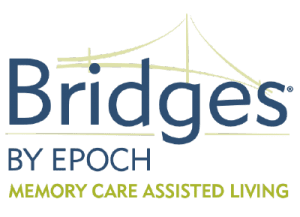We all want to remain as independent as possible for as long as possible – that’s why we eat right, get exercise and avoid (as much as possible) vices that are harmful to our health. As we age, the things we need to do to stay independent change from when we were younger. Our nutritional needs change and we still need exercise, yes, but there are a few new concerns to consider.
Every year, one in three seniors experience a fall. This leads to a nearly 2.8 million seniors requiring emergency room visits and hospital stays. Falling is, obviously, one of the biggest risks for seniors and causes injuries like hip fractures and other broken bones.
While bones may be able to knit back together, a senior’s confidence and independence may take a beating that they won’t ever recover from. After a fall, many seniors are no longer as mobile as they once were – due partially to the physical injury, but oftentimes a lack of confidence plays a huge role.
Falls and the lack of confidence they cause can be a vicious cycle that is hard to break. Seniors become tentative and shy away from doing exercise and activities that could cause them to fall again … which may lead to more falls because of their lack of strength and coordination … and so on, and so on. Eventually, this can lead to a lack of independence and a gradual decline in health.
That’s why incorporating balance and mobility exercises into your routine is essential – particularly for adults age 65 and older. The American Health Organization recommends that seniors participate in four different types of exercises in order to remain healthy as they age: strength, endurance, flexibility and balance.
Why Good Balance Is Important
Balance isn’t just for ballerinas and tightrope walkers. Maintaining good balance is important for many of the things we do every day, like climbing up and down the stairs, reaching for things on a high shelf or even tying our shoes. Good balance also helps avoid falls, because it makes you able to do the quick corrections necessary when your foot slips or your weight shifts too far to one side.
Being able to avoid falls allows you to do so much more than you might otherwise. When you aren’t afraid of falling (which, by the way, is one of the most common fears for seniors – more than half of seniors over the age of 62 have this fear), you’re more able and willing to do things like take walks, go out with your friends and run to the store (either literally or figuratively). Having that confidence allows you to stay active and independent, which reduces your risk of depression, anxiety, social isolation and declining health. Who knew that doing something as simple as standing on one leg could be so beneficial?
How to Build and Maintain Balance
Oftentimes we aren’t aware that we have a balance problem until we attempt some balance exercises. (Don’t believe us? Try standing on one foot right now to test your balance ability.) If you end up bobbling around, don’t worry! Our bodies are incredibly adaptable and respond quickly to consistent exercise. By incorporating balance exercises into your routine, you’ll see noticeable improvements in just a few weeks.
Many people do a specific form of exercise, like yoga or tai chi, in order to develop their balance. However, you don’t need to put on exercise clothes and grab a mat to practice your balance. Lots of exercises can be done anytime and anywhere, like standing in line to check-out, making dinner in your kitchen or even watching TV. Here are some exercises you can start doing – even right now!
Standing on One Foot
Stand behind a sturdy chair, holding on to the chair back for balance. Lift one leg and balance on the other for 10 seconds. Repeat this 10 times, and then switch sides.
Tightrope (Heel-to-Toe) Walking
Stand on one side of the room and focus on a spot just ahead of you to keep you steady. Walk forward towards that spot by placing your heel just in front of your other foot. Do this for 20 steps and if you’re feeling brave, turn around and go back the same way.
Back Kick Walk
Channel your inner dancer with this exercise. Raise your arms to shoulder height and slowly walk forward. As you walk, lift your back leg for one beat before stepping forward. Continue, alternating legs, for 20 steps.
Balancing is a whole-body exercise, so in order to maintain optimum mobility, you’ll want to make sure your you’re getting a full workout to build strength and muscle tone. Pay particular attention to your core and lower body – these are the muscles that are most engaged while walking and balancing.
Again, it’s easy to strengthen up these muscles. In fact, if you’re in fairly good shape already, your legs may be the strongest part of you. That’s because we do so much walking in our daily lives (usually) that your legs are accustomed to carrying and propelling your body weight. However, if you aren’t as mobile or have a sedentary desk job, you can benefit from doing exercises throughout the day. Many of them can be done from a chair.
For example, stand up and sit down for 10 reps, focusing on using the strength in your legs to lift you up. Try and do it without using your hands if possible. To exercise your core, do seated rotations: turn from the waist as far as possible to one side, hold for a few breaths and then do the other side. Hit both muscle groups at the same time by lifting one leg at a time straight in front of you, holding for five counts and then doing the other side. Best of all, you never have to leave your seat and you’ll still get a good workout!
This is the time to enjoy everything that life has to offer, and by maintaining your strength, balance and mobility, you’ll better be able to keep your independence well into your senior years. For more information please contact us on our website.
A Fulfilling Lifestyle
Bridges® by EPOCH at Nashua provides assisted living memory care that is comfortable, positive, safe and engaging. Exclusively dedicated to caring for those with Alzheimer’s disease and other forms of dementia or memory impairment, we’ve created a wellness-focused lifestyle that promotes dignity and individual preferences. Our memory care professionals receive specialized and ongoing training designed to help residents maximize their independence in a secure, calm environment – making a truly positive impact on the lives of our residents each and every day.
Many Services, One Monthly Fee
Our dedicated memory care and services celebrate life and support each resident’s individual strengths. No matter what stage of memory loss a resident may be experiencing, their family can be sure that with us, their loved one is safe, secure and happy.
Stunning, Purpose-Built Design
Featuring a stunning design and luxuries only a new community can offer, Bridges® by EPOCH at Nashua is so much more than a beautiful place to live . . . It’s a community with a singular focus: enrich the lives of our residents and help their families enjoy meaningful relationships with them. Our evidence-based design features attributes that make life easier for those with memory loss: soft colors, directional cues, aromatherapy and interactive life stations.
Contact us today to learn more.


